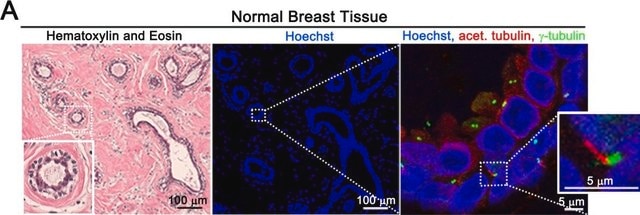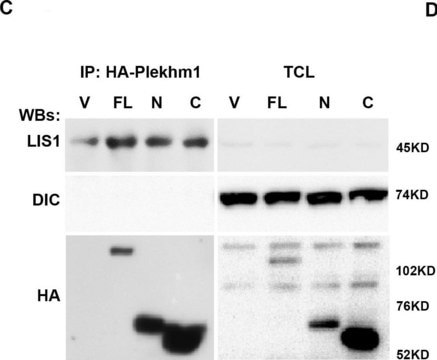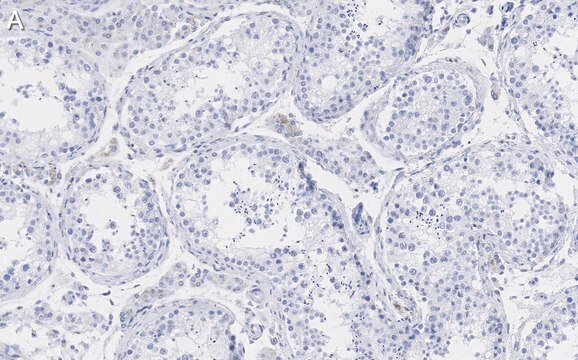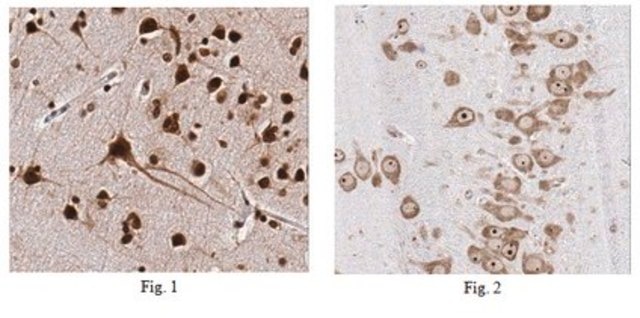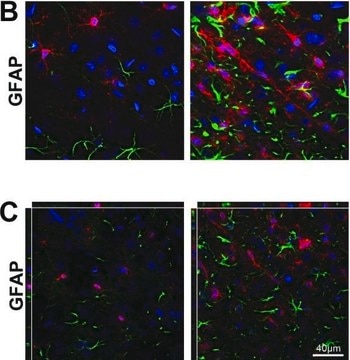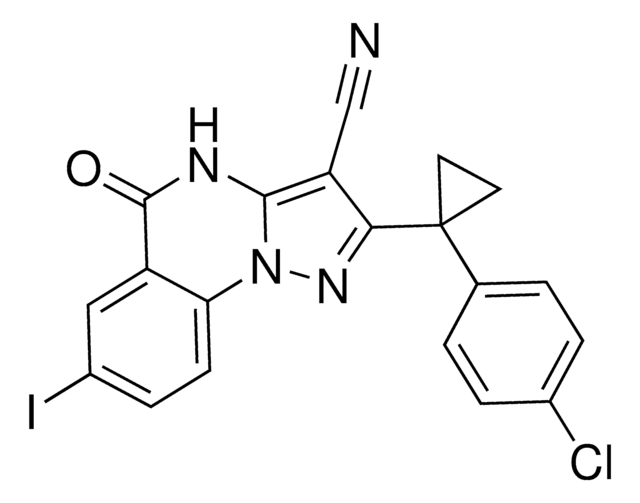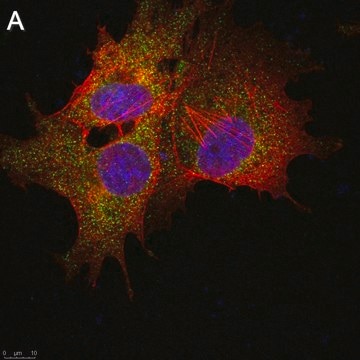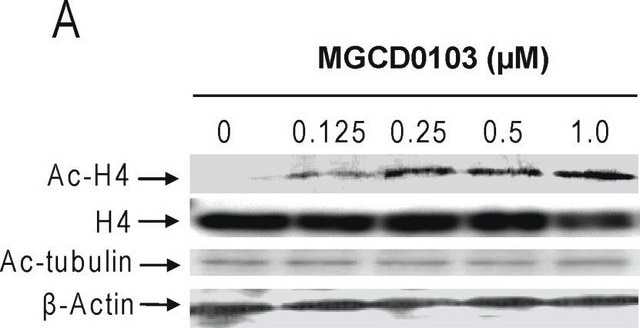General description
We are committed to bringing you greener alternative products, which adhere to one or more of The 12 Principles of Green Chemistry.This antibody is Preservative-free, produced without the harm or sacrifice of animals and exceptionally stable to allow for ambient shipping and storage if needed and thus aligns with "Waste Prevention", "Designing Safer Chemicals" and "Design for Energy Efficiency".
Click here for more information.
ZooMAb® antibodies represent an entirely new generation of recombinant monoclonal antibodies.Each ZooMAb® antibody is manufactured using our proprietary recombinant expression system, purified to homogeneity, and precisely dispensed to produce robust and highly reproducible lot-to-lot consistency. Only top-performing clones are released for use by researchers. Each antibody is validated for high specificity and affinity across multiple applications, including its most commonly used application. ZooMAb® antibodies are reliably available and ready to ship when you need them.
Specificity
Clone 1K23 is a ZooMAb® Rabbit recombinant monoclonal antibody that specifically detects Transcription cofactor vestigial-like protein 4 (VGLL4).
Immunogen
His-tagged, full-length human recombinant Transcription cofactor vestigial-like protein 4 (VGLL4).
Application
Quality Control Testing
Evaluated by Western Blotting with human recombinant VGLL4.
Western Blotting Analysis (WB): A 1:1,000 dilution of this antibody detected human recombinant VGLL4.
Tested applications
Affinity Binding Assay: A representative lot of this antibody bound VGLL4 with a KD of 1.0 x 10-12 in an affinity binding assay.
Immunocytochemistry Analysis: A 1:1.000 dilution from a representative lot detected VGLL4 in A431 and Human umbilical vascular endothelial cells.
Note: Actual optimal working dilutions must be determined by end user as specimens, and experimental conditions may vary with the end user
Target description
Transcription cofactor vestigial-like protein 4 (UniProt: Q14135; also known as Vgl-4, VGLL4) is encoded by the VGLL4 (also known as KIAA0121) gene (Gene ID: 9686) in human. VGLL4 is a member of the vestigial like family that acts as a transcriptional cofactor of VGLL. It functions as a regulator of Wnt/β-catenin signaling. It negatively regulates Wnt/β-catenin signal transduction pathway via inhibiting β-catenin and TCF. It performs its biological functions through two TDU domains (aa 214-224 and 242-252) via interacting with TEA domain (TEAD) transcription factors. It is shown to be a transcriptional suppressor that inhibits YAP-induced overgrowth and tumorigenesis through direct competition with YAP for binding TEAD4. It binds to the TEAD4-TCF4 complex and inhibits transactivation of both TCF4 and TEAD4. Deletion of its second TDU domain (aa 242-252) is reported to completely abolished its inhibitory function. Lower expression VGLL4 is associated with poor survival in many human cancers. Its levels are shown to be significantly downregulated in colorectal cancers (CRC) and are inversely correlated with the expression of Wnt/β-catenin target genes. Knockdown of VGLL4 gene enhances proliferation and tumor formation of CRC cells. It is also reported to suppress epithelial-mesenchymal transition (EMT) and contribute to apoptosis signal transduction pathway. It can negatively regulate XIAP, cIAP1, and cIAP2 and contribute to apoptosis by forcing the nuclear relocation and sequestration of these proteins. VGLL4 is phosphorylated by CDK1 during G2/M arrest, which inhibits its tumor suppressing activity. This ZooMAbZooMAb® recombinant monoclonal antibody, generated by our propriety technology, offers significantly enhanced specificity, affinity, reproducibility, and stability over conventional monoclonals. (Ref.: Deng, X., and Feng, L. (2018). Am. J. Cancer Res. 8(6); 932-943; Jiao, S., et al. (2017). Nat. Commun. 8; Article 14058; Jin, HS., et al. (2011). Biochem. Biophys. Res. Commun. 412(3); 454-459).
Physical form
Purified recombinant rabbit monoclonal antibody IgG, lyophilized in PBS, 5% Trehalose, normal appearance a coarse or translucent resin. The PBS/trehalose components in the ZooMAb formulation can have the appearance of a semi-solid (bead like gel) after lyophilization. This is a normal phenomenon. Please follow the recommended reconstitution procedure in the data sheet to dissolve the semi-solid, bead-like, gel-appearing material. The resulting antibody solution is completely stable and functional as proven by full functional testing. Contains no biocide or preservatives, such as azide, or any animal by-products. Larger pack sizes provided as multiples of 25 μL.
Reconstitution
300 μg/mL after reconstitution at 25 μL per vial. Please refer to guidance on suggested starting dilutions and/or titers per application and sample type.
Storage and Stability
Recommend storage of lyophilized product at 2-8°C; Before reconstitution, micro-centrifuge vials briefly to spin down material to bottom of the vial; Reconstitute each vial by adding 25 μL of filtered lab grade water or PBS; Reconstituted antibodies can be stored at 2-8°C, or -20°C for long term storage. Avoid repeated freeze-thaws.
Legal Information
ZooMAb is a registered trademark of Merck KGaA, Darmstadt, Germany
Disclaimer
Unless otherwise stated in our catalog or other company documentation accompanying the product(s), our products are intended for research use only and are not to be used for any other purpose, which includes but is not limited to, unauthorized commercial uses, in vitro diagnostic uses, ex vivo or in vivo therapeutic uses or any type of consumption or application to humans or animals.

